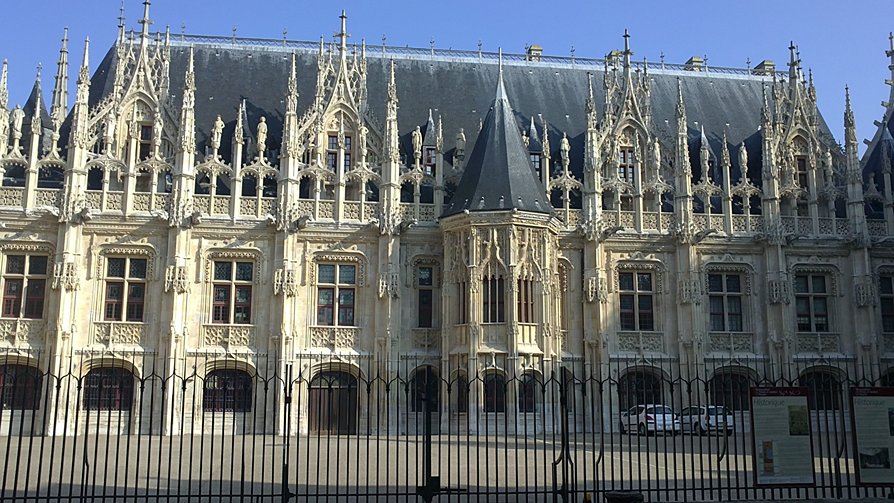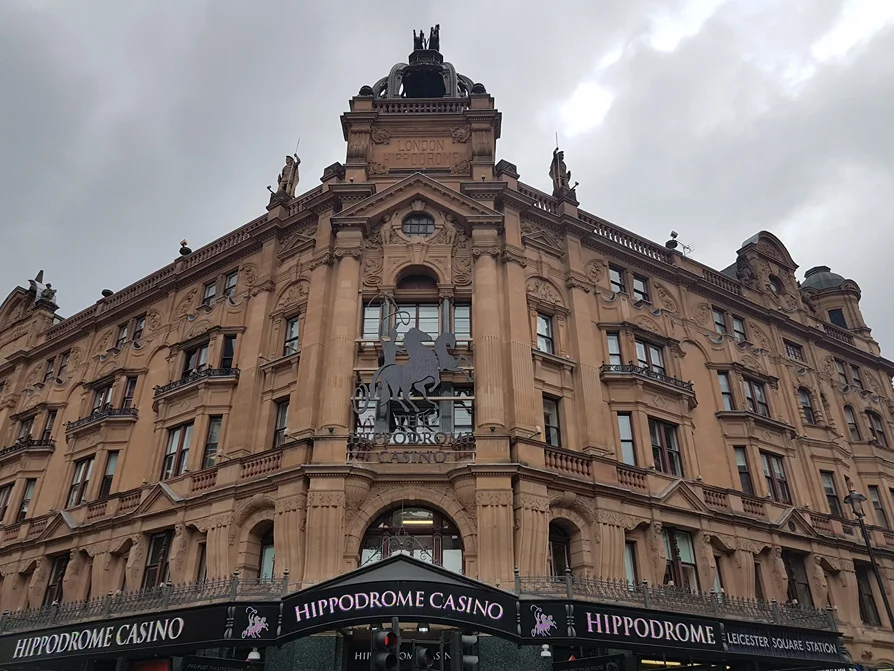📊 Do you prefer Neo-Classical or Neo-Gothic Architecture?
Neo-Gothic
100% - 2 voti
Neo-Classical
0% - 0 voti
Neo-Classical and Neo-Gothic architecture are two distinct styles of architecture that emerged during the 18th and 19th centuries. They differ in their design principles, historical influences, and overall aesthetic. Neo-Classical architecture is a revival of the classical styles of ancient Greece and Rome, and is characterized by clean lines, symmetry, and the use of columns and pediments. Gothic architecture is characterized by intricate ornamentation, pointed arches, ribbed vaults, and elaborate stone carvings. There is no definitive answer to whether one style is favored over the other, as both styles have their own unique characteristics and appeal to different tastes and preferences. Both styles can be used to create buildings that are functional, beautiful, and meaningful.
Neo-Gothic
100% - 2 voti
Neo-Classical
0% - 0 voti

Neo-Gothic (Palacio de Justicia de Ruan)

Neo-Classical (The Hippodrome Casino London)
In Europe's eclectic and multifarious cultural milieu in the 18th and 19th centuries, a cornucopia of diverse architectural styles flourished that enraptured spectators. Among these varied genres, two particularly stood out as uniquely expressive showcases of impressive artistry: Neo-Gothic architecture with its soaring spires and pointed arches adorned by intricate embellishments. On the other hand, Neo-Classical structures seamlessly melded Greco-Roman influences and innovative design aspects to emanate a timeless yet cutting-edge aura. Despite both segments experiencing revivals in twentieth-century America subsequently, distinct historical contexts resulted in unique aesthetic displays, and pronounced differences between them remained evident.
The Neo-Classical style of architecture demonstrates a deep appreciation for the ancient Greek and Roman styles, reflected in its incorporation of intricate design elements that are both ornate and structurally sound. The movement strictly adheres to classical principles, giving a refined sense with symmetrical lines and implementing columns and pediments in their structures. This style was influenced during the Enlightenment as rationality and order were highly prioritized ideals, resulting in grandiose buildings that often display domes and decorative sculptures accompanied by impressive entrances fusing for an overall majestic appearance. The metropolis of the District of Columbia is situated in the eastern region of the United States and serves as its capital city. Houses the remarkable United States Capitol Building, boasting an unparalleled Neo-Classical architectural style, unlike any other structure in America. Architect William Thornton's exceptional talent is evident even after two centuries; visitors still marvel at the building's incredible dome and exterior features! Likewise noteworthy for its Neo-classicism elements is the White House, with beautiful columns intricately incorporated into skillful pediments within its design framework. Across America, numerous notable edifices exhibit features emblematic of Neo-Classical artistry. One such example is the Lincoln Memorial, a grandiose and temple-like monument conceived by architect Henry Bacon in 1922. The statue, at its core, features an enormous likeness of Abraham Lincoln surrounded by embellished columns. Another masterpiece bearing this style resides within Washington D.C.: the Supreme Court Building erected back in 1935 and created by Cass Gilbert- distinguished for exhibiting intricate pediments adorning majestic marble-covered Columns.
Although both the Neo-Classical and Neo-Gothic modes of architecture possess a particular splendor, they pursue visual perfection through vastly contrasting methodologies according to their intricacies. The elaborate intricacies common to the latter's adornments are unique to that style alone; both retain an inherent majestic aura throughout. Rather than relying on classical elements such as symmetry or classicizing orders - which mark Neoclassicism with Greek-Roman inspiration- Gothic architecture takes after medieval European design characteristics featuring pointed arches coupled with vaults and intricate stonework adorned superbly by figurines alongside stained glass windows inducing markedly different atmosphere from neoclassical designs. This illustrates how each approach is distinct, while various edifices across America showcase individuality through diverse forms. Contrary to prevalent opinion, the reincarnation of neo-gothic architecture represents a well-honed rediscovery of complicated design features frequently deployed during Europe's Middle Ages. Their vital facets incorporate exquisite embellishments, elegant archways, grooved vaults, and ornamented stone carving techniques inspired by Romanticism that stressed emotions and singularity. Results often generate spires decorated with creative complexities, picturesque statues, and hand-made stained gables windows alluding to eeriness like never before.
The Cathedral of Saint John, the Divine in New York City, showcases a style of architecture called Neo-Gothic. Back in 1892, around 130 years ago today, construction began on this impressive structure which features tall spires and intricate stonework that was meticulously crafted along with lovely stained-glass windows displaying various hues. Over at the University of Chicago's campus stands another edifice exuding similar aesthetic qualities; Rockefeller Memorial Chapel, designed by visionary architect Bertram Goodhue is an exceptional work completed well before our time, dating back to1928. Across the United States, many awe-inspiring structures exist that feature elements stemming from Neogothic design. One such notable example can be found in New York City - the Woolworth Building stands tall as an immense skyscraper crafted by architect Cass Gilbert over one century ago. On its exterior facade lay intricate Gothic details, including archways pointed at their apex and stone-carved gargoyles that accentuate every outer surface of this superb edifice's walls. Another sight worth seeing resides in Chicago - two architects contributed to creating Tribune Tower in 1925: Raymond Hood and John Mead Howells forged elegance via complex spires and pointy arcades while showcasing unique execution techniques for utter visitors' enjoyment both indoors and out! The Metropolitan Museum of Art is within the lively bustle of one of America's bustling cities. This astounding accomplishment seamlessly combines aspects from two distinct architectural styles: Neo-Classical and Neo-Gothic. Positioned amongst towering skyscrapers and busy streets, this remarkable edifice exudes a refined air with its harmonious union of intricate details derived from opposing design epochs. Its grandiosity manifests through soaring columns to elaborate carvings, rendering it unparalleled amidst modern constructions. In collaboration with Jacob Wrey Mould, Architects Calvert Vaux conceptualized the original building in 1880, presenting a beautiful frontage influenced by Gothic architecture's deluxe style.
The lasting allure of Neo-Classical and Neo-Gothic styles stems from their adeptness in capturing the vast scale and significance of past architectural accomplishments while still evolving along with present-day design patterns. These two genres take inspiration from classical antiquity and medieval times; however, they employ these influences to produce exclusive and impressive edifices that enthrall audiences. Additionally, it is impossible to overemphasize the effect that these styles of architecture have had on American history. Numerous buildings around the country act as exceptional models for their one-of-a-kind features. To illustrate, Washington D.C.'s United States Capitol and The White House beautifully exhibit Neo-Classical design elements; meanwhile, in New York City's Cathedral of Saint John, the Divine can be seen a unique Neo-Gothic style alongside other notable structures like Chicago's Tribune Tower and Woolworth Building. Over time, these preferences in style have remained famous and continued to stimulate current architects. These modern architects have utilized features from both styles in their creations by including grandeur and monumentality with a dash of invention and uniqueness. This has led to an amalgamation of old-fashioned elements combined with contemporary ones resulting in the Metropolitan Museum of Art located in New York City presenting as a remarkable building differentiating itself from newer edifices, combining aspects that belong to Neo-Classical movement as well as embracing Neo-Gothic traits harmoniously creating its captivating demeanor.
In brief, Europe's 18th and 19th centuries bore witness to the emergence of two distinctive architectural styles: Neo-Classical and Neo-Gothic. These aesthetic movements developed independently from one another, each with its own unique set of characteristics that contributed to their stark contrast in appearance. Despite renewed interest in America today, each style features unique historical origins, design components, and expression. In particular, Greek and Roman antiquity inspires intricate elements within neo-classicism that produce imposing structures with pediments and columns under domes. By contrast to such ornamentation stands the elegance inherent to Gothic architecture featuring pointed archways alongside ribbed vaults ornately decorated through stone carvings reflecting Romanticism's emphasis on richness coupled with uniqueness. The nation of the United States can proudly showcase a myriad of awe-inspiring instances of Neo-Classical architecture, prominently including but not limited to exemplary structures such as the esteemed Capitol Building situated in Washington D.C., The White House - an emblematic edifice synonymous with American political power and leadership-, Supreme Court structure which symbolizes justice administration at its finest, coupled with Lincoln Memorial; all sterling examples that effortlessly embody the elegance and grandeur so highly associated with this particular architectural style. Meanwhile, New York City's Cathedral of Saint John the Divine and the University of Chicago's Rockefeller Memorial Chapel highlight notable instances of neo-gothic structure. Additional noteworthy displays can be seen within structures like New York City's Woolworth Building or Tribune Tower located in Chicago. Albeit the distinctions, both architectural designs exhibit magnificence and immensity. Their alluring power captivates individuals with its everlasting allure, as witnessed in the seamless fusion of Neo-Classical and Neo-Gothic styles showcased through The Metropolitan Museum of Art's esteemed architecture. These historical constructions serve as a testament to American culture ingrained within these enduring artistic movements, showcasing countless splendid works throughout history while still heavily cherished today.